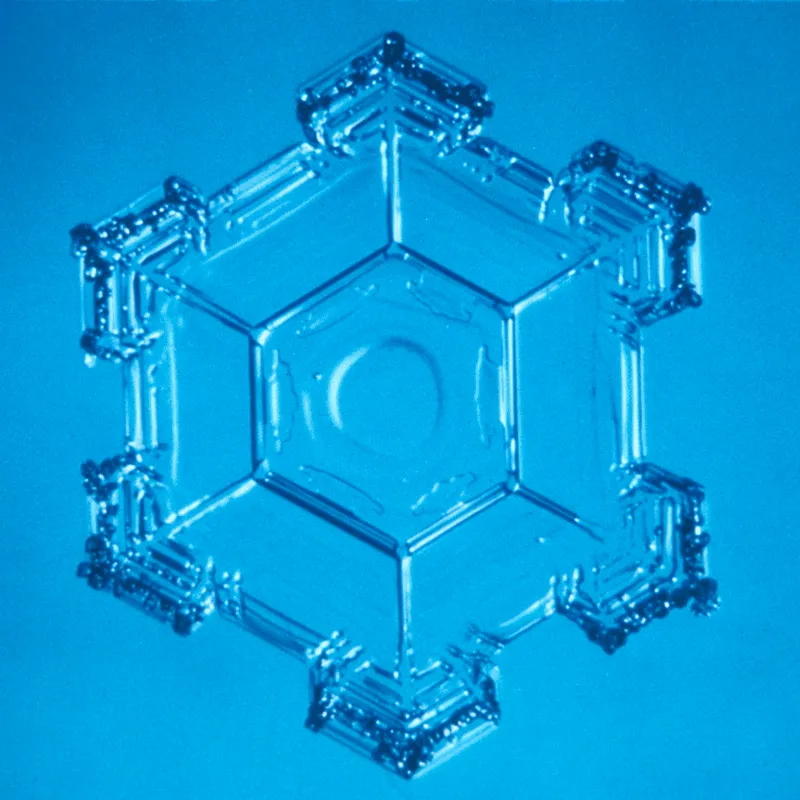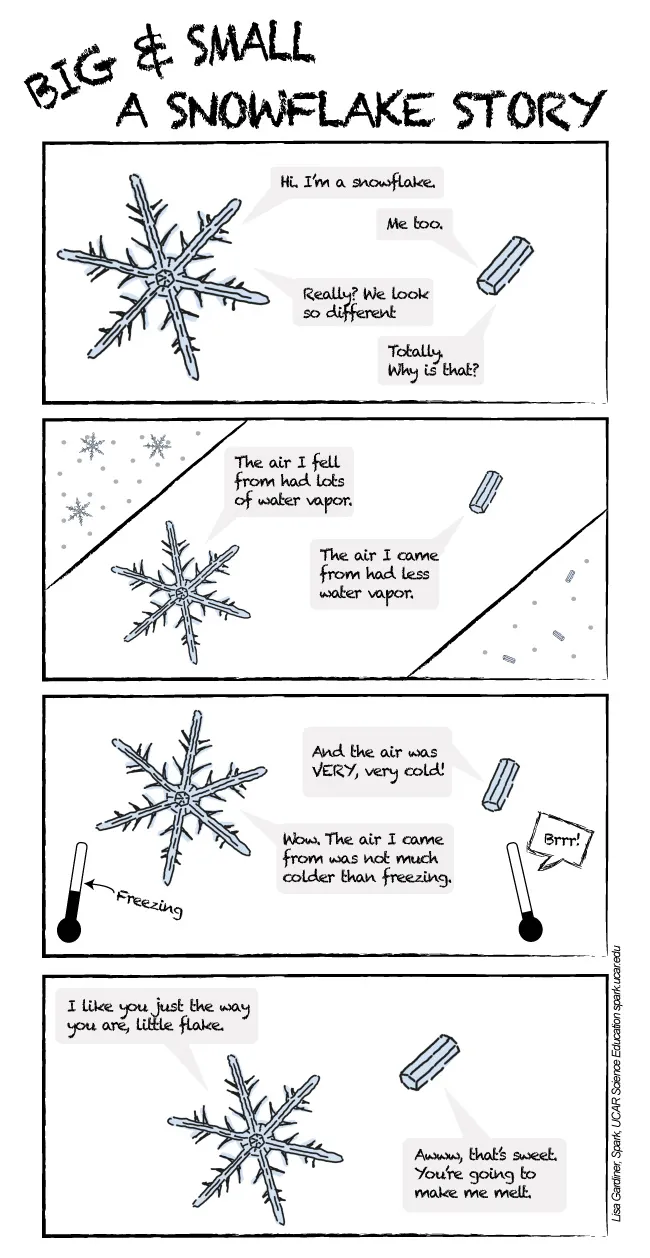Snowflakes

Under a microscope, one can see the shapes of ice crystals that make up a snowflake.
UCAR
Some snowflakes are made of a single ice crystal while other, more elaborate snowflakes are made of as many as 200 ice crystals fused together.
Snowflakes form in clouds where the temperature is below freezing (less than 0ºC, or 32ºF). The ice crystals form around tiny bits of dirt that have been carried up into the atmosphere by the wind. As the snow crystals grow, they become heavier and fall toward Earth. Different types of snowflakes form in different conditions. Temperature determines if the crystals become a flat plate, a long column, or a prism shape.
Snowflakes can be symmetrical six-sided shapes, like the type that people cut from folded paper, or they can be small and irregularly shaped. The six-sided shapes, or hexagons, form because of how water molecules organize themselves as they freeze. If they spin like tops as they fall, they may still be symmetrical when they get to the ground. If they fall sideways, they become lopsided.
There are so many ways that ice crystals can grow that some people say that no two snowflakes are alike. Probably no two snowflakes have exactly the same arrangement of molecules, but they can look alike.
Snow is a type of precipitation. On average, 10 inches of snow melt down to about an inch of water; however, not all snow contains the same amount of moisture. Some places receive very heavy snow. For instance, only five and a half inches of January snow on Mount Washington, New Hampshire, melt down to an inch of water. In contrast, over 15 inches of January snow at Crested Butte, Colorado, melt down to an inch of water.
Snow covers some places year-round. Known as snowfields, these snow-covered places are found where temperatures stay cold all year, both near the poles and on mountaintops. Over the past several decades, the snow cover on some mountaintops, especially mountains near the equator, has been shrinking as the climate has warmed.

UCAR Center for Science Education/Lisa Gardiner
Snowflakes come in all shapes and sizes, depending on the temperature of and amount of water vapor in the air. Collect snowflakes as they fall on a sheet of dark paper and take a look at their shapes. Peruse the Snow Crystals online gallery to find beautiful, magnified photographs of snowflakes.
For more ideas about how to explore snow, visit the Winter Weather Teaching Box.